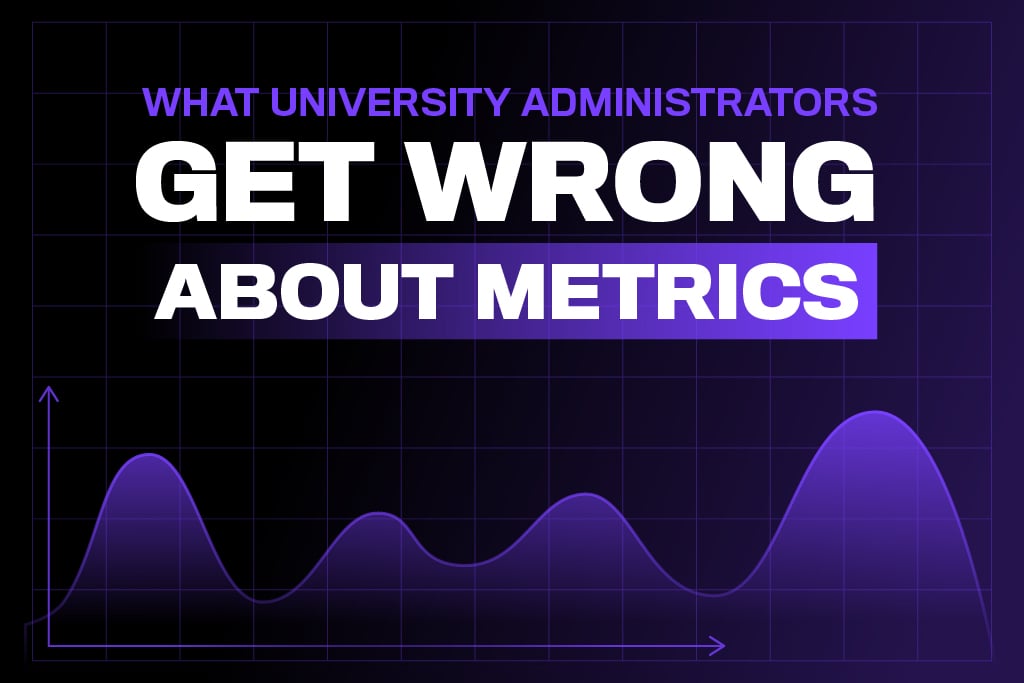
Earlier this week I was on a call with a prospective client, not for anything in particular, but just to introduce the agency and see if there was any way we could help. The prospect told us about a lot of the great work they had been doing; their brand position was strong, they were growing their social following, and had a lot of the right pieces in place to be successful.
But as the conversation went on, it became clear that there was a significant gap between what they were doing and the results they were achieving.
This got me thinking about how universities measure success on a day-to-day basis. The ultimate goal of any admissions staff member is to get butts in seats; if you’re not doing this, the day-to-day work doesn’t amount to much.
So where do administrators go wrong when measuring success and what can they do about it?
Measuring likes, follows, and comments
Everyone likes to talk about their social accounts and how much growth they see on a daily basis. While social can play an important role in an overall marketing strategy, it’s hardly a good measuring stick for success. I like to call them “vanity metrics” because the easier something is to measure, the less important it is. So instead of tracking likes, follows, and comments like a hawk, pay more attention to how many people are making it all the way through your conversion funnel, whether those conversions be email signups, brochure downloads, etc.
Looking at click-thru-rate alone
Don’t get me wrong – click-thru-rate is a good thing to measure. It tells you how good you are at creating engaging content that makes people want to learn more. But what happens after someone clicks through? My guess is that many people will find that their bounce rate* is 80% or higher; this tells me that the content on the page is lackluster, at best. Instead of focusing on clicks alone, track clicks alongside bounce rate and time on page. This will give you a better sense of how effective you are at engaging prospects.
*Note: Google has phased out "Bounce Rate" from the new Google Analytics 4, which every website has to switch to starting in July 2023. Instead, GA4 replaces bounce rate with the new "engagement rate" metric. An "engaged session" is one that meets one of the following requirements:
- Lasts longer than 10 seconds.
- Contains more than one pageview.
- Contains at least one "conversion event".
Not taking a holistic view
Many prospects (and even clients) that we speak to have very little visibility in how leads travel through the entire recruitment admissions process. And I can understand – this is often a technical limitation as certain platforms don’t play well with others. But, the problem still stands. If you can’t tell which leads ultimately convert to students in a timely manner, you can’t optimize your marketing efforts to get more of those types of students. For example, let’s say leads from Platform X are significantly cheaper, but leads from Platform Y convert at a significantly higher rate even though they’re more expensive – which platform will you prioritize? Without seeing the big picture, you’d likely prioritize the cheaper leads. The “sales” cycle for higher education is long, and technologies and teenagers’ tastes change faster than a Formula 1 pit stop. In order to stay relevant in the field, take a holistic view of your prospect’s journey in order to optimize the best-performing tactics.
Wrapping Up
Metrics are a vital step to marketing success, but only if we measure what matters (this happens to be the title of a great book by John Doerr that I highly recommend).
Download your complimentary Brand Manifesto Workbook today!









